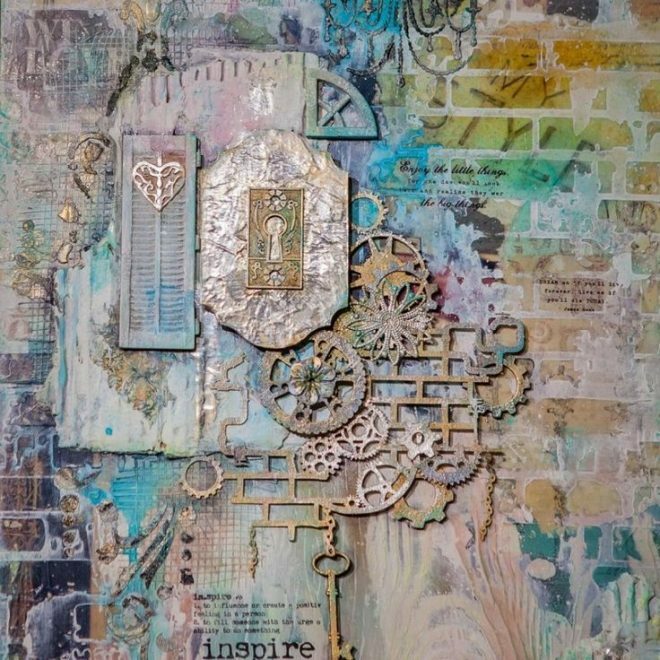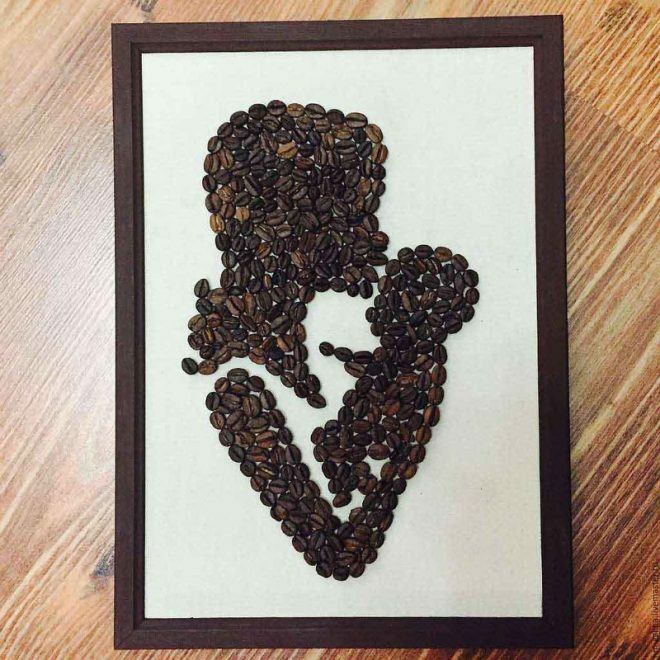Painting of furniture facades is an opportunity to give your favorite furniture a new life. MDF cladding is inexpensive, durable, easy to maintain and can be used to create a variety of reliefs. And wooden panels last a long time and are very beautiful. Multifunctional cabinets and cabinets are usually chosen for a long time. But over time, their appearance, colors, finishes wear out or no longer fit into the overall design of the room. Painting furniture facades saves money and renews a room in a short time.

Types of paints for MDF
Painting of kitchen facades from MDF and solid wood is the most common. But always the paint should be of high quality, comply with the operating standards and be applied according to the instructions.
Attention! Earned on our website kitchen designer. You can familiarize yourself with it and design your dream kitchen for free! May also come in handy wardrobes designer.
There are many types of paints:
- Alkyd - plastic, durable, but not resistant to sunlight.
- Oil-based, which adhere to almost any surface. But for her, the use of a primer is mandatory.
- Silicone. Creates an elastic, heat-resistant coating. Such furniture fronts are used near the stove.
- Water-based - dissolves in water, environmentally friendly and dries quickly. But the performance is not the best.
- Acrylic silicone is harmless and durable, but one of the most expensive.
- Polyvinyl acetate can flake off if the application technology is not followed.
Of all paints and varnishes, automotive enamel, which is an opaque glassy thin layer, is suitable for shiny facades. It is she who, having dried, becomes a beautiful gloss that does not change over the years.

There are two types of car enamel:
- Acrylic. It is applied simultaneously and after drying, the facade immediately looks uniformly glossy. With acrylic, you can create color effects. For example, combining base enamel with acrylic, you get a solid and expensive surface.
- Alkyd. It is made from glycerin and resins, is cheaper than acrylic and dries quickly at room temperature.
Types of varnishes for MDF
Glossy finishes are more expensive than matte finishes, but they also look much prettier.
- The most budgetary varnish is alcohol-based, drying in half an hour.
- Epoxy varnishes are made up of two components and are quite durable. They don't even care about blows.
- Acrylic is inferior to them in strength and durability. But they are completely non-toxic, as they are diluted with water.
- Polyurethane, polyester and nitrocellulose varnishes are durable and resistant to all atmospheric influences (do not fade). These surfaces are easy to polish. They look best on a tree.

Technology
- The first step is to completely disassemble the furniture (unscrew the doors, remove the fasteners, fittings, glass). Cover with masking tape the places that you do not need to paint, mark the holes between the parts with a marker so that they then fit into place. Remove dust, dirt and old paint.
- It is very important to properly degrease the surface before applying the primer. If this is not done, then the facade will be defective. The best degreaser is organic-based, the so-called Anti-silicone. It removes fats, oils and silicone directly. It is also suitable for interlayer degreasing.
- Prepare the façade surface so that it becomes absolutely smooth. To do this, remove the old coating and go for the first time with emery.
- Putty and repair all chips and cracks, then sand them with sandpaper (grit P 180).
- Surfaces are primed with a special insulating mixture (also called a primer), which ensures less paint consumption. When the primer is dry, brush again with a P 240 grit brush and apply the basic color. Its method of application is indicated on the can, depending on the composition.
- Then the surface is varnished and polished.
- The very last stage is the removal of masking tape, the installation of furniture according to the marks, hanging the hinges and installing the handles.
Tools
You will need brushes, a spray gun, or a roller to apply paint. It all depends on your budget, professionalism and work preferences. But remember that the perfect surface is obtained only with a spray gun or spray gun.
The spray gun is not only painted, but also primed. There are two types of pistols: pneumatics and electrics. The former work with air supplied by a compressor, while electrical appliances require an appropriate socket. The diameter of the nozzle is in the range of 1-1.3 mm and this is enough for a uniform spray.
When buying a roller or brush, be sure to pay attention to the markings where it is noted for which composition they are suitable. So, for example, a roller with velor bristles is ideal for water-dispersible paints, and natural and combined bristles on brushes allow stains, acrylics or varnish to fit well.
Of the auxiliary materials you will need: gloves, protection for the lungs (mask, respirator), sandpaper different grain sizes, sanding felt (adhesive tape-bright), degreaser or anti-silicone, solvents, masking tape, markers.
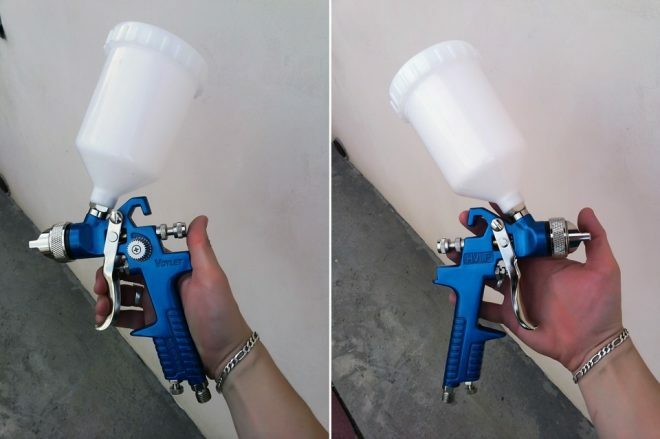
How to remove old paintwork
Most often, the top layer on furniture is gloss (varnish or paint). If you do not remove it, the new material will not stick and will not stick. Therefore, the top is processed with the coarsest emery (P220-280). You do not need to remove all the paint, but simply walk over the entire plane so that a roughness appears for better adhesion.
Old coatings can be easily removed with special washes. The most universal numbers are 646 and 647. For acrylic auto enamels, the R-12 solvent is used. To clean the base enamel, you should purchase a solvent that is suitable for the base composition. It is also needed to clean the spray gun and other surfaces from the remnants of paint and varnish materials.
Acrylic compounds are only sanded off. Otherwise, they cannot be removed in any way.
There is another option for removal - with a paint dryer (burner). It is suitable for polyester coatings. Under the influence of high temperature, the varnish cracks, and then it is removed with a spatula or chisel.
Grinding
A perfectly smooth surface is the guarantee of a high-quality coating. This can only be achieved by preliminary grinding.
Different grit sizes are required for different sanding steps. From P220 to 280 is the preparation of the base for priming. Р 320 - removes unevenness of the ground, and Р500 is intended for sanding just before the application of paint.
For finishing and delicate sanding, today Scotch tape or non-woven felt (with grit from P800) is used. It allows you to finish sanding just before painting. Its foam base bends and perfectly handles all irregularities, and the analog can be found on kitchen sponges.
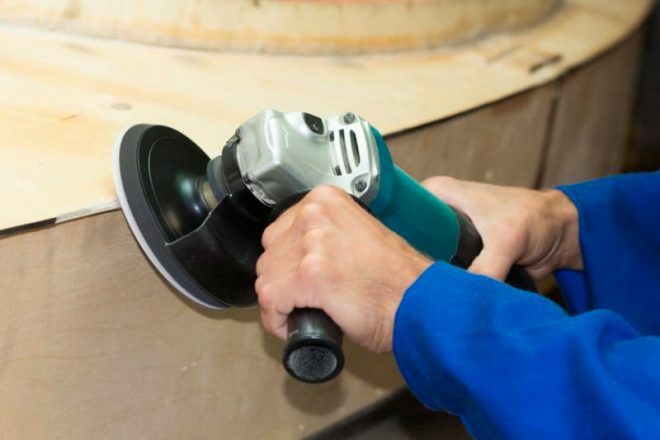
Painting
The painting itself is simple. If you use a can or spray gun, be sure to protect your respiratory tract with a respirator. The device should be located at a distance of 15-20 cm from the facade. Remember that the coloring translational movements are carried out strictly in one direction.
The paint for furniture facades MDF lays down on completely dried soil and on perfectly flat surfaces. For a more concentrated and deep tone, cover the facades again. The smoothness of the new layer is disturbed by emery in order to increase the adhesion of the next one. If you have several colors, then the dried first layer is sealed with masking tape and the paint is applied again.
Varnish application
Painting of furniture facades with mdf varnish usually occurs in one layer for glizal and in several layers for paint (maximum 3). In this case, the plane must be completely dry (the same glizal dries up to 7 days).
The first layer is a barely visible spray, which is needed so that there are no streaks from thicker subsequent layers. It is important that the work area is not dusty, otherwise any lint will be visible in the light. It is for these reasons that it is undesirable to paint on the street.
Each coat of varnish is applied at intervals of up to 10 minutes. And the result will be a perfect glossy facade with a mirror effect.
Finishing and decor
Finishing sanding of facades is performed using P500 emery. The thinnest layer of material is at the ends, so you should work carefully here.
After emery, walk again with scotch-bright. In this case, you do not need to take special care, since the material is soft and does not damage the surface.
Painting the facades of the kitchen is not limited to this, they can be additionally decorated. This can be the application of ordinary varnish, glazing (glizal) or polishing. Glizal is a translucent paint for kitchen facades, somewhat reminiscent of marble stains. It is diluted with water and applied in several layers.
Facade patterns can be created in all sorts of ways (using a damp sponge, hard brush or textured roller). But this should be done quickly, since the glizal immediately begins to dry out. At the very end, cover the panel with clear varnish again.
There is also a kind of decor called "raindrops". 2 colors are used. Darker paint is applied first. When it hardens, water droplets are sprayed with a conventional spray. Immediately, without waiting for drying, apply the next color with a light spray with a spray gun. When the paint dries, the area is sanded with adhesive tape (P 1200-1500) and opened with varnish.
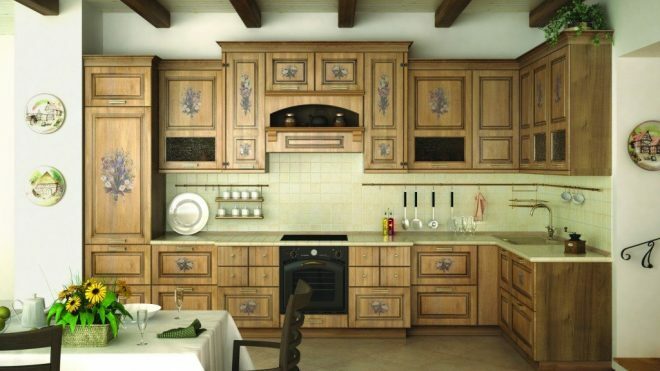
Frequent mistakes
The technology requires appropriate indicators of humidity (no more than 50%) and temperature (no less than 20 ° C and no more than 24 ° C). Therefore, paint and varnish work should be carried out indoors, using protective equipment for the lungs.
The light base of the surface changes most easily. When using wood stain (for wood) or colored varnish, you will get a darker facade, but at the same time preserve the structure of the material. If your base is dark, then it is more difficult to emphasize its structure.
The easiest way to get the desired tone is by mixing the desired colors several times in different dishes. Check the results on test surfaces and when the paint is dry, you can make a more accurate selection.
average rating 0 / 5. Number of ratings: 0
No ratings yet. Be the first to rate.
